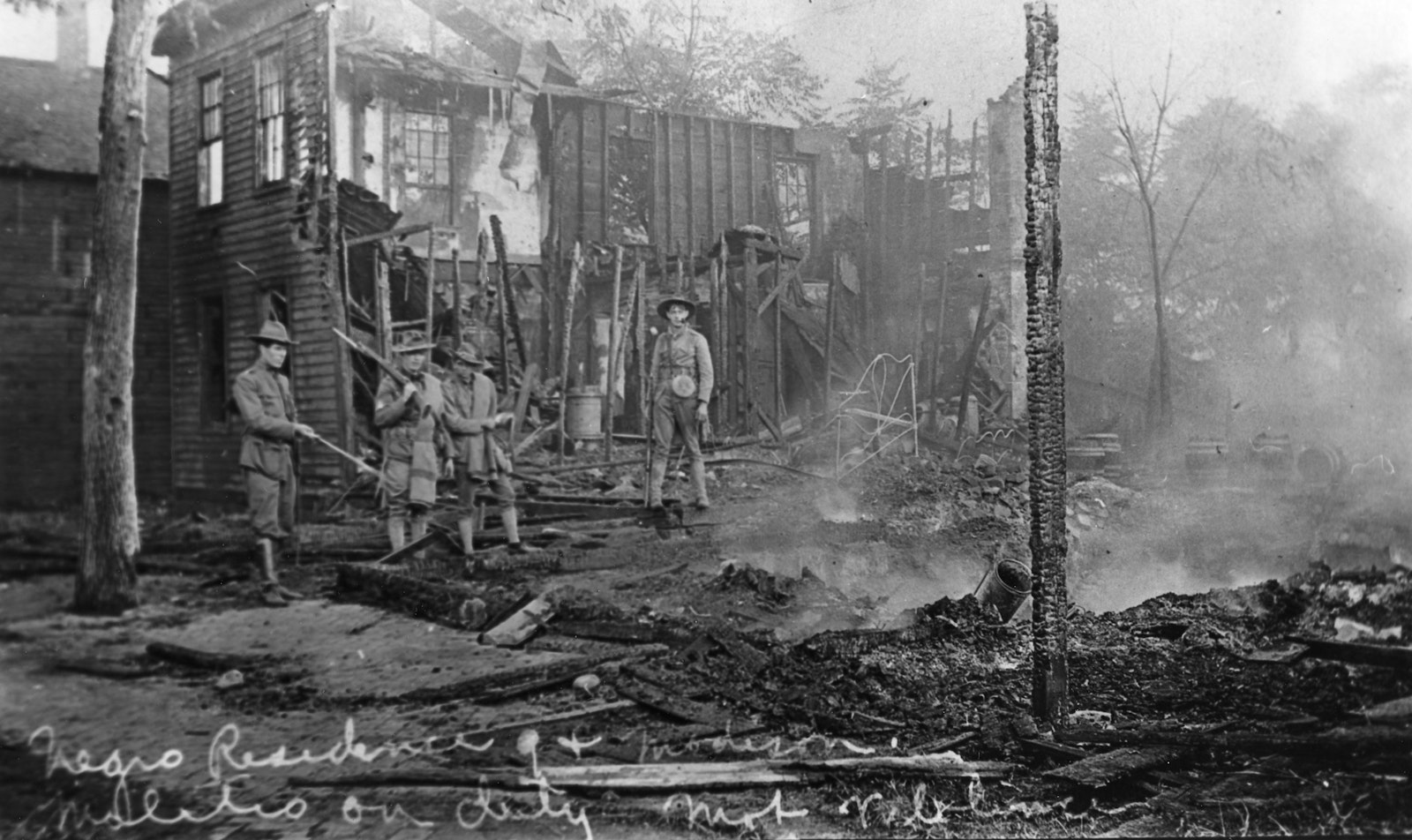
.
.
Springfield 1908 Race Riot National Monument
The Springfield 1908 Race Riot National Monument commemorates the tragic events of August 14-16, 1908, in Springfield, Illinois when local African American residents were targeted and victimized by mass racial violence from white residents.
The 48 hours of mass rioting and destruction began following the arrest of two Black men, accused of raping a white woman and murdering a white man. The mob gathered outside the jail, calling to take matters into their own hands and lynch the men. Anticipating the violence, the police secretly moved the men to a second jail location. Upon learning of the move, the mob erupted in violence.
Mobilizing, the mob headed into Black neighborhoods, looting and damaging Black owned homes and businesses and lynching two prominent men in the local Black community, Scott Burton and William Donegan. The racial violence continued for days until the Governor called the Illinois National Guard to quell the riots.
The racial violence had reverberations nationwide — highlighting that such violence wasn’t exclusive to the deep south.
Founded a year later in 1909, the National Association for the Advancement of Colored People (NAACP) emerged from the outrage over the racial violence of the riot and with a mission to address issues of racial injustice and inequality, marking a crucial step in the civil rights movement.
Becoming a National Monument
On August 16, 2024, marking the 116th anniversary of the riot, the site was officially designated as a national monument through the Antiquities Act. The park is comprised of roughly two blocks on 9th and 11th Streets along Madison Street, where much of the damage from the 1908 race riot occurred.
The National Park Foundation played a crucial role in this effort by managing the complex process of property acquisition and due diligence. The properties involved, owned by the City of Springfield and St. John’s Hospital, were donated to NPF and subsequently deeded to the National Park Service, ensuring that the properties entered the national park service seamlessly and collaboratively.
Today, thanks to the philanthropic support of NPF’s land conservation and history and culture programs, the Springfield 1908 Race Riot National Monument will be preserved in perpetuity. This support helps ensure that the National Park Service can tell a more complete and inclusive story of the history and ongoing civil rights movement in America.
Park Updates
-
UpdateStatement on the Establishment of the Springfield 1908 Race Riot National Monument